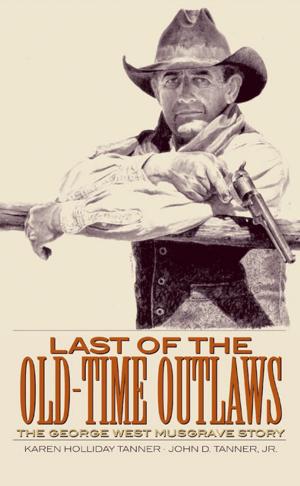Somewhere Over There
The Letters, Diary, and Artwork of a World War I Corporal
Nonfiction, History, Military, World War I| Author: | Francis H. Webster | ISBN: | 9780806155517 |
| Publisher: | University of Oklahoma Press | Publication: | March 24, 2016 |
| Imprint: | University of Oklahoma Press | Language: | English |
| Author: | Francis H. Webster |
| ISBN: | 9780806155517 |
| Publisher: | University of Oklahoma Press |
| Publication: | March 24, 2016 |
| Imprint: | University of Oklahoma Press |
| Language: | English |
Decades before Americans became familiar with the term “embedded journalist,” a young cartoonist named Francis Webster embodied that role when he served as a volunteer infantryman during World War I. Using his skills as an illustrator, he documented firsthand the harsh realities of combat life and regularly submitted visual dispatches of his experiences back to an Iowa newspaper. The first published collection of Webster’s wartime chronicles, Somewhere Over There presents a unique view of World War I through a rare compilation of letters, diary entries, cartoons, sketches, and watercolors.
As editor Darrek D. Orwig explains in his introduction, Webster gained valuable training as an illustrator when he worked for famed political cartoonist Jay “Ding” Darling during the early years of World War I. When the United States entered the conflict in 1917, Webster volunteered with the Iowa National Guard as it prepared for deployment on the western front. His regiment would be part of the Forty-Second Rainbow Division, one of the first American units to arrive in France. Webster’s accounts, rendered in words and pictures, capture the daily life of a citizen-soldier who trained in stateside camps, traversed the submarine-infested waters of the Atlantic Ocean, fought in muddy trenches, and recovered in hospitals from poisonous gas exposure. Webster suffered a mortal wound during the Meuse-Argonne Offensive in 1918, when he placed a fellow soldier’s safety before his own.
Webster’s illustrations for the Des Moines Capital helped readers of the time learn what American soldiers were experiencing “over there” by bringing news from the western front to the home front. For nearly ninety years following his death, Webster’s family treasured his collection of artwork and writings before donating it to the Iowa Gold Star Military Museum at Camp Dodge, where it resides today. This wartime assemblage is amplified by Orwig’s enlightening commentary based on extensive research that places Webster’s story within the wider narrative of American involvement in the “war to end all wars.”
Decades before Americans became familiar with the term “embedded journalist,” a young cartoonist named Francis Webster embodied that role when he served as a volunteer infantryman during World War I. Using his skills as an illustrator, he documented firsthand the harsh realities of combat life and regularly submitted visual dispatches of his experiences back to an Iowa newspaper. The first published collection of Webster’s wartime chronicles, Somewhere Over There presents a unique view of World War I through a rare compilation of letters, diary entries, cartoons, sketches, and watercolors.
As editor Darrek D. Orwig explains in his introduction, Webster gained valuable training as an illustrator when he worked for famed political cartoonist Jay “Ding” Darling during the early years of World War I. When the United States entered the conflict in 1917, Webster volunteered with the Iowa National Guard as it prepared for deployment on the western front. His regiment would be part of the Forty-Second Rainbow Division, one of the first American units to arrive in France. Webster’s accounts, rendered in words and pictures, capture the daily life of a citizen-soldier who trained in stateside camps, traversed the submarine-infested waters of the Atlantic Ocean, fought in muddy trenches, and recovered in hospitals from poisonous gas exposure. Webster suffered a mortal wound during the Meuse-Argonne Offensive in 1918, when he placed a fellow soldier’s safety before his own.
Webster’s illustrations for the Des Moines Capital helped readers of the time learn what American soldiers were experiencing “over there” by bringing news from the western front to the home front. For nearly ninety years following his death, Webster’s family treasured his collection of artwork and writings before donating it to the Iowa Gold Star Military Museum at Camp Dodge, where it resides today. This wartime assemblage is amplified by Orwig’s enlightening commentary based on extensive research that places Webster’s story within the wider narrative of American involvement in the “war to end all wars.”















